On June 3, 1887, Kaiser Wilhelm I laid the foundation stone for the Kiel Canal in Holtenau. Work was thus able to start on the project and it was estimated to cost 156 million gold marks. Canal offices were established in Holtenau, Kiel, Rendsburg, Burg and Hochdonn. The project gave employment over the following eight years to up to 10,000 workers and as well as other equipment, 42 river dredgers and dry excavators, 75 tugs, 97 locomotives and 50 traction engines were in use.
Some 80,000,000 cubic metres of earth had to be excavated and carried away to construct the canal, 98.6 kilometres long, 8.5 metres deep, 60 metres wide at the waterline and 26 metres wide at its bed. Although excavating the channel meant in effect a straight-through canal at mid-tide, it was necessary to protect it by providing locks at the eastern end at Holtenau and at the western end out to the North Sea in Brunsbüttel. Both locks were 216 metres long with a clearance width of 25 metres, which meant a usable length between gates of 150 metres, and had a depth of 9.97 metres.
On completion of the two locks, Kaiser Wilhelm II, who as Prince William had been present at the ceremony when his grandfather laid the foundation stone, laid the final stone on June 21, 1895, in the presence of an international fleet of ships in Holtenau. The monarch had already sailed the canal from Brunsbüttel on the previous day with his ship “SMS Hohenzollern” and a flotilla of 22 national and international prestige ships.
Thus the “Kaiser-Wilhelm-Kanal”, which in 1948 was renamed the Nord-Ostsee-Kanal, although it is known internationally as the Kiel Canal, was inaugurated.
Increasing traffic levels and the newly-built warships made an initial widening of the canal necessary as early as 1907 to 1914 to a width of 102.5 metres and a depth of 11 metres. Including associated enlargement of the locks, these expansion measures now swallowed up 242 million gold marks. To combat the ever-increasing erosion of the underwater banks caused by larger and larger ships and continuously increasing traffic figures and to be able to handle the shipping more speedily and safely, a second phase of expansion was commenced in 1965.
In the course of building the canal, a number of important traffic routes had been severed. In order to reconnect them, it was necessary to build ten bridges and a tunnel and to establish fourteen ferries as well as to construct a transporter bridge.
The Kiel Canal is the busiest artificial waterway in the world and the main traffic artery in northern Europe. In 2011, 33,522 ships passed through the canal and the tonnage of freight they were carrying amounted to over 98 million tonnes.
Further information on the Kiel Canal in Dithmarschen can be obtained in local tourist information offices.





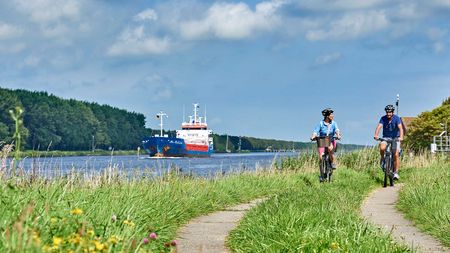
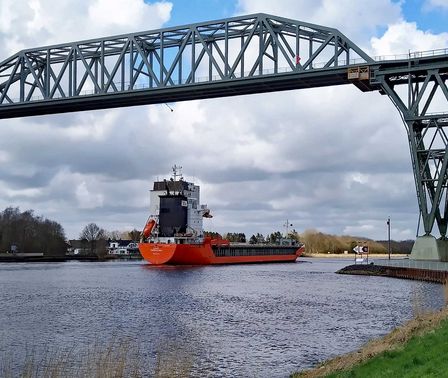
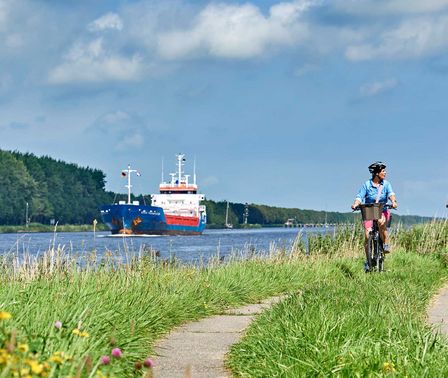
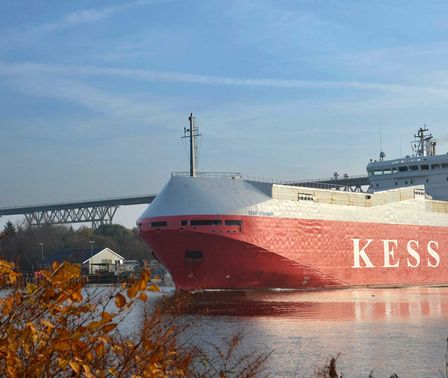
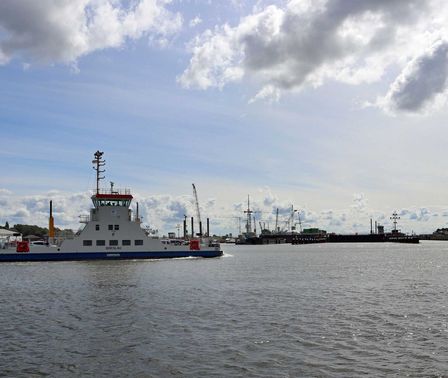
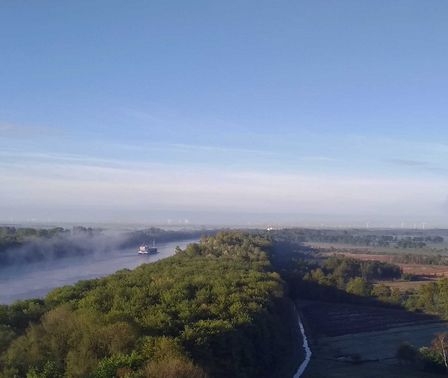
![[Translate to English:] Fähre auf dem Nord-Ostsee-Kanal](https://www.echt-dithmarschen.de/fileadmin/_processed_/2/3/csm_NOK-Faehre-Brunsbuettel_0c6361cb40.jpg)